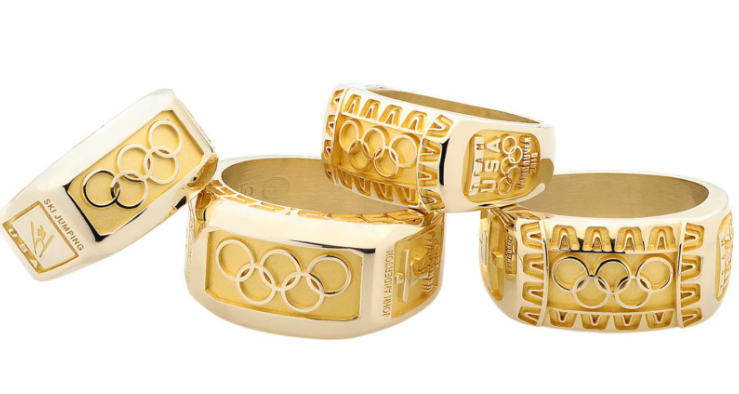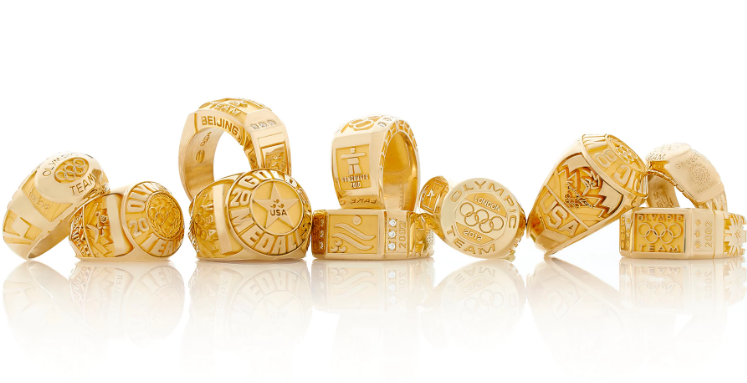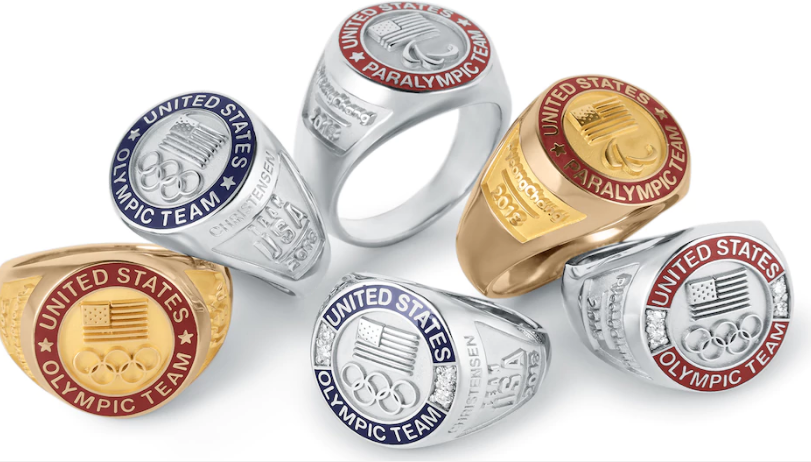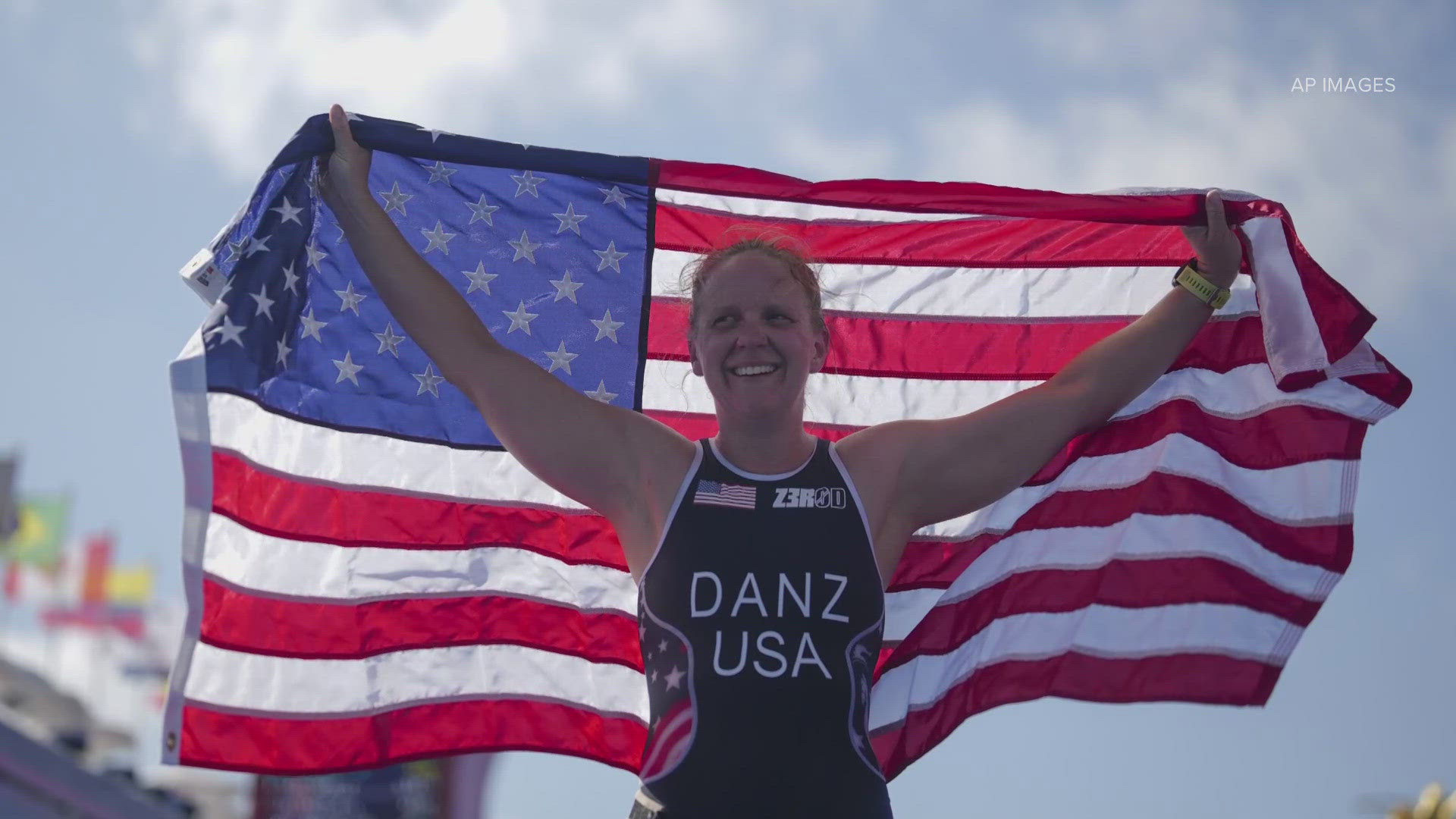No matter how they perform at the Games, U.S. Olympic and Paralympic athletes are guaranteed a piece of gold. It doesn’t come in the form of a medal around their necks; instead, It takes the form of an Olympic ring to commemorate their experience and athletic achievement.
The sterling silver customized rings are donated to the athletes after being made by U.S. company O.C. Tanner in Salt Lake City, home of the 2002 Winter Olympic Games. The athletes are sized and fitted for the rings at Team Processing, where they’re showered with free gear and other goodies. From there, they can choose to bling out the rings with diamonds, upgrade to 10-karat or 14-karat gold, platinum gold, or anything they want.
"Not many people know that every athlete that competes as part of Team USA gets a commemorative ring just for participating," three-time Olympic snowboard halfpipe medalist Kelly Clark said before making the trip to her fifth Olympic Games in PyeongChang. "Not everyone will walk away with a medal around their neck when the competition is done, but everyone will have a ring to remember their once in a lifetime experience. I am blessed to have four of these rings and I am looking forward to adding one more to my collection this February."
The rings can be engraved with “Team USA,” the athlete’s name, or a jersey number if they are part of a team sport. One athlete chose to up the ante even further, engraving “kick ass” on their ring.

“The Olympic rings that Team USA athletes receive are very similar to a Super Bowl ring in terms of status,” said David Wise, the 2014 Olympic champ in ski halfpipe. “As an individual sport athlete making it to the Olympics is the apex of achievement in the same way making it to the Super Bowl is the apex in football. I was lucky enough to get my hands on one of the rings that says ‘Olympic Gold Medalist’ on it, which – of course – adds extra flair. I wear my Olympic ring often and with pride. Everyone who notices the ring is fascinated with it. I’ve had it get me free meals, drinks, first class flights, and hotel upgrades. It even got me out of a parking ticket!”
Year after year, through feedback from the athletes and the U.S. Olympic Committee, the designs shift. Each class of Olympians and Paralympians are a little different, and always USOC-approved.
This year, the top of the ring features the Olympic logo and is bordered by the five Olympic rings and the U.S. flag. The sides of the ring say “Team USA 2018” and the athletes’ name, while the other side features “PyeongChang” and a pictogram of the athlete’s sport.

“The PyeongChang 2018 rings are designed to be a memento of the Olympic experience and a reflection of the Team USA brand and host city that athletes and staff associate with during their entire Olympic experience,” explained Sandra Christensen, the vice president of Award Design and Development at O.C. Tanner.
The rings orders are filled by the time the athletes return home; in 2016, the USOC held an event in Washington D.C. where athletes received the rings.
Every athlete mold is kept by the company in case of problems down the line, such as rings being lost or stolen. For example, Shaun White’s Vancouver ring was stolen, but it was able to be replaced. And last summer, Ronda Rousey said her rings were taken, too.


